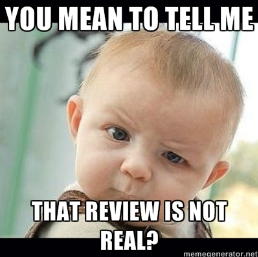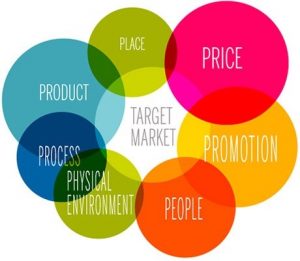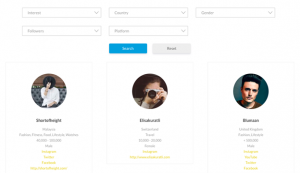
The marketing mix strategy is essential to the success of any business. A well-researched marketing mix strategy differentiates your product and service from the competitor. In this article, we will discuss ten steps for you to develop a successful marketing mix strategy for your small business.
However, before we jump into that, lets first discuss what exactly a marketing mix is?
What Is the Marketing Mix?
A marketing mix refers to the tools that are used to meet the company goals and customer demand. There are generally four elements that comprise the “marketing mix,” they are also referred to as the four Ps of marketing.
i. Product: A product is generally described as any good or service that is manufactured for sale to fulfill a consumer’s need. A product can be anything, from a physical good to an experience or an event.
ii. Price: How much are you going to sell your products for? are you going to follow a market skimming strategy, or are you going for market penetration? The pricing strategy you choose will strengthen the brand perception you want to build in your consumer’s mind. Secondly, the price of your product must align with your target market. If your price bracket is not within your target markets reach, you will most likely be unable to sell your product. You must also consider the competitor’s price before launching your own. This will help you make better financial decisions.

iii. Place: The third P includes the decisions that will ultimately help your product reach the target market. Placement refers to the decision of distribution that helps the product travel from the manufacturer to the customer’s home.
iv. Promotion: The last P is the promotion of the product/service; it is the sum of all communication between the buyer and the seller facilitated through direct or indirect means.
Steps to Develop a Marketing Mix Strategy for your Small Business
Now that you are aware of what a marketing mix is made up of let’s walk you through the steps of developing a marketing mix strategy for your brand.
Step #1 – Set Goals
The first step towards a marketing mix strategy is to create SMART goals and objectives. Brands must understand what their end results are. Depending on your brand strategy, these goals can be either more customers, creating brand awareness, or increasing profits for sales. Moreover, your marketing strategy should have a clearly defined time frame within which the goals are achieved.
Step # 2 – Define your Budget
It is imperative that you define and allocate a budget for your small business. The amount of money that you would be spending on product research, innovating new products, and working on product promotion. Allocating a budget is extremely important when defining your marketing mix. Unless you don’t define a budget, it is impossible to carry out the project activities in harmony.
Step # 3 – Establish a Unique Selling Proposition (USP)
A USP is a marketing strategy that defines how the users will benefit from your product or service. Your Unique Selling Proposition must clearly define how your product/service is solving a problem and how it is unique in the market.
Step # 4 – Define your Target Market
For effective communication, it is important to understand and define your target market. Any marketer worth their salt knows that they cannot market to everyone; all businesses must select a segment of the market that’s most likely to purchase its offerings.
Businesses can do that by developing buyer personas; a detailed profile of the types of consumer who is most likely to purchase your product. You can do that by considering the following factors:
- Demographic (Age, Income, Education Level, Gender, Religion, Marital Status, etc.)
- Geographic (Continent, Country, Urban/Rural, etc.)
- Psychographic (User status, hobbies, lifestyle, political views, etc.)
- Behavioral/occasional (seasons, holidays, events, etc.)
For small businesses, defining their target audience is essential to success. If you market to the wrong people, you are not going to sell anything. What is more, you need to know your customers are so that you can market to them effectively.
Step # 5 – Take your Customer Feedback Seriously
Customer’s advice is valuable information that can help you make improvements in your product/services. Creating questionnaires is an efficient way to store valuable feedback. Here are a few questions that you can ask customers:
- What are your thoughts regarding the product quality?
- Are you satisfied with the customer care?
- Is our product/service meeting your needs?
- How can we make improvements to our product/service?
Step # 6 – Work on a Product Description
When defining our product, make sure that you highlight the unique features that make your product stand out from the rest. This is how you can show your products worth to your customers.
Step # 7 – Be aware of Distribution Channels
Defining a distribution channel is just as important as your product design, promotion, and other aspects of marketing. A distribution channel plays a big role in how you will conduct sales and what profits you will earn. Your distribution channel depends on the kind of product you are selling. However, generally, the distribution options are as following:
- Selling through wholesalers.
- Selling through retailers.
- Selling directly to consumers.
Step # 8 – Define a Pricing Strategy
An important part of the marketing mix equation is to define your pricing strategy. The first thing you need to do is research your customer’s prices so that you are not charging your customers more money. It is also important to understand the price bracket that your target audience is willing to pay. Going above, it will simply not sell your product.
Step # 9 – Choosing a Technique to Promote
Promoting your product is defined by various aspects. Some of these are listed as follows:
- Selling directly to the targeted audience.
- Selling through exhibitions/press release/sponsoring deals etc.
- Selling through advertisements on the TV/Radio/Social media.
Step #10 – Using Inbound Marketing Techniques
The marketing mix is incomplete if you are not using inbound marketing techniques. These techniques comprise marketing through digital marketing tools and techniques such as content marketing, social media marketing, email marketing, blogging, etc.
Conclusion
A marketing mix strategy will help you reach your target market effectively and sell your product. By following the steps explained above, you can successfully integrate a marketing mix strategy into your business!
Business & Finance Articles on Business 2 Community
(95)








